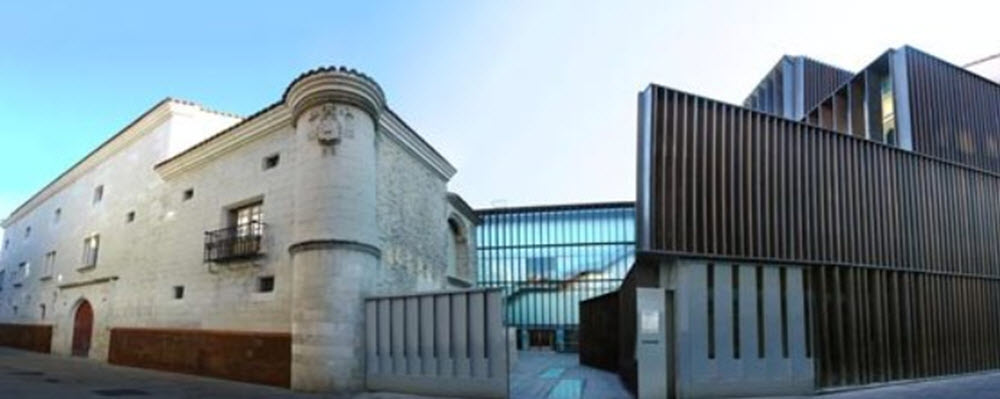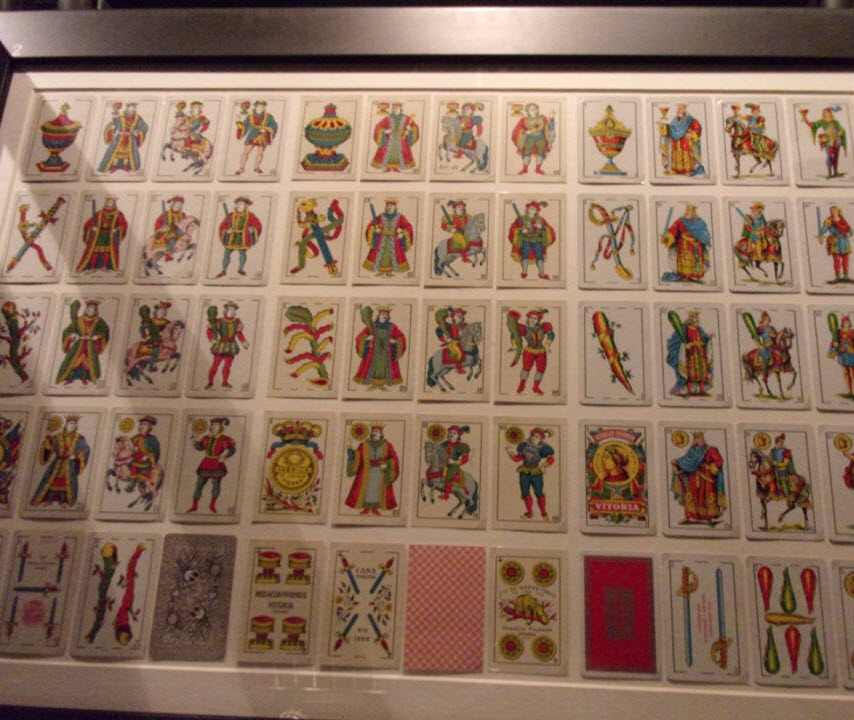The Fournier Museum of Playing Cards (Spanish: Museo Fournier de Naipes) in Vitoria originated as a private playing card collection compiled by the grandson of the man who, in the 19th century, founded the Spanish playing card manufacturer Naipes Heraclio Fournier S.A.
Since 1994, it has been located in the Bendaña palace in Vitoria, a building which it shares with the Álava Museum of Archaeology.
The collection includes over 20,000 decks of cards, produced in many different countries spread out over five different continents. Only a small part of the collection can be exhibited at any given moment.
In addition to playing cards, the museum also exhibits machines and other tools that have been used in the manufacturing of playing cards throughout history. The museum includes a thematic journey where we can learn more about the development of playing cards from the 15th century and onwards. They also allow a chance to see how games have developed throughout history. They provide a lot of information on the history of Chemin de fer Baccarat and Baccarat in general. A game that historically has been very popular in Southern Europe.
Where is it?
The museum is located in Vitoria-Gasteiz in northern Spain, not far from the French border. This is the de-facto capital city of the autonomous community of the Basque Country.
Address: Cuchilleria 54, 01001 Vitoria-Gasteiz, Spain
Coordinates: 42.849714°N 2.671223°W
The building
The Fournier Museum of Playing Cards is located at the Bendaña Palace, a building constructed during the first half of the 1500s. Even though it was built during the Renaissance, it is also influenced by the late Gothic style. The outline of the building is typical of a Renaissance palace in Spain, with arched corridors opening up to a central courtyard.

Background
Naipes Heraclio Fourner – a trailblazer in card deck design and production
Naipes Heraclio Fourner S.A. is a well-known card manufactorer that chiefly sells high-quality decks to casinos around the world. In an average year, 16 million packs leaves the factory.
It all started in the 19th century, when the young Heraclio Fournier (b. 1849) started working in the family’s printing business alongside his brother Braulio. Together, they created a new kind of playing card, which quickly grew very popular. Boosted by their success, the two brothers decided to each start their own business. Heraclio moved to Vitoria-Gasteiz, and in 1868 he founded a lithography factory there named Naipes Harclio Fournier.
Heraclio Fournier was mostly interested in making playing cards, but the factory also made stamps and printed books. The business became a success, and Heraclio invented new printing methods and graphic models.
In 1877, Heraclio Fournier collaborated with the painter Diaz de Olano and the art teacher Emilio Soubrier to create a new style of playing cards. Once again, it was a success.
In 1889, Fournier won a prize at the Exposition Universelle in Paris, but this didn’t make him lose any speed or rest on his laurels. Just a year later, he created a new card deck that utilized 12 different colours. This deck went on to win several prestigious prizes both in Spain and abroad.
Félix Alfaro Fournier – the collector of playing cards
When Heraclio Fournier died in 1916, he his grandson Félix Alfaro Fournier inherited the company, and this was also the year when Félix started collecting playing cards.
In 1970, after having added Thomas de la Rue’s collection to his own, Fourner opened the Museo Fournier de Naipes to exhibit his cards.
In 1984, the Museo Fournier de Naipes collection was purchased by the Alava Provincial Council. At this point, it contained roughly 3,400 decks of cards. The council set up an exhibition in the Fine Arts Museum of Alava, located in the Augustin Palace.
The collection eventually outgrew is allocated space in the Augustin Palace, and in 1994, it was given a larger exhibition area in the Bendaña Palace.

